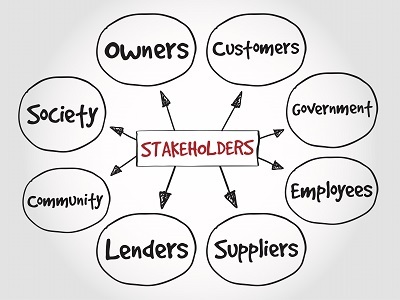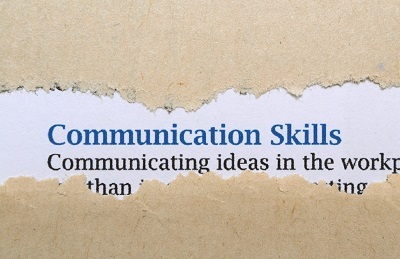Joel Garfinkle's Blog, page 7
April 2, 2018
How to be Confident at Work

“One important key to success is self-confidence. An important key to self-confidence is preparation.
~Arthur Ashe~
Grayson asks: I’m naturally a shy person, and I want to learn how to be confident at work. I know that confidence is key to coming across as a leader, and I definitely want to advance. How can I stop blending into the background and start exuding self-assurance?
Joel answers: Grayson, you’re right to be focusing on building your confidence. Without confidence, you won’t increase your visibility at work or have the courage to take risks. And without taking risks and building visibility and influence, you’ll have difficulty reaching the next level. This is an exciting time in your career—you’re launching a new, more confident phrase that will take you to places you never imagined you could go. Being confident at work takes effort—here’s how to get there.
Prepare What You’ll Say at Meetings
Thinking through what you’ll bring to a meeting will help you say it with confidence. You’ll also be more articulate, having carefully prepared your ideas. Everything doesn’t have to be completely polished—maybe you have a few ideas to share in a brainstorming session, and you want to get the group’s feedback. Either way, you’ll contribute with more confidence when you feel prepared. Come to the meeting willing to speak up at work.
Grow a Team of Supporters
When you know you have star players batting for you, you’ll feel your confidence soar. Build relationships with mentors you can learn from, both within and outside of the organization. Cultivate advocates within your company as well—people with influence and credibility who will talk you up to bosses and coworkers. You won’t just benefit from their sway over group opinions—you’ll gain confidence from the insights these relationships give you. Whenever you feel uncertain, visualize this team of people all cheering you on.
Ask for Feedback
A confident person doesn’t put her head in the sand, avoiding any feedback. Nor does she believe she’s above all criticism. Rather, she has the courage to be vulnerable by asking for others’ input about her performance. When you solicit feedback, others will perceive you as more confident—it shows you’re challenging yourself to improve every day. Consistent feedback from people you trust will also strengthen your performance, raising your confidence even higher.By the same token, if your confidence is being drained by a critical coworker, remember that your response to criticism speaks volumes. If criticized in front of others, invite the critic to continue the conversation over coffee. Actively striving to learn from criticism and understand where it’s coming from will show self-assurance.
Find a Problem You’re Equipped to Solve
Pinpoint a problem that you’re uniquely poised to solve—something that others will notice, even though they may keep pushing it to the back burner. Tackling a persistent problem head-on shows confidence and ambition, especially when you took the initiative to solve it.
Celebrate Risks
When you make a bold move that took some courage, celebrate! If you held your ground in a meeting instead of backing down at the first sign of controversy, that’s a milestone. Whether or not you accomplished what you intended, you showed guts, and that’s a victory in itself. Share what happened with one of your biggest cheerleaders—whether your spouse, a coworker, or a close friend—so you’ll have someone to affirm your success.
Like Grayson, almost all of us need to learn how to be more confident at work as we progress in our careers. Keep challenging yourself to step outside of your comfort zone while celebrating your wins, and you’ll be well on your way to a healthy level of self-confidence.
Joel’s executive coaching can help you fast track your development by building your confidence, visibility, and influence at work. Review his executive business coaching services.
March 19, 2018
How to Increase Employee Engagement

“It is easier to motivate people to do something difficult than something easy.” ~Sheri L. Dew~
Lydia Asks: I don’t know how to make some of my people feel more invested in their work. I would have thought success alone would be the best motivation, but apparently not. How can I get people to care more about their work?
Joel Answers: Increasing employee engagement is vital to retaining your people and succeeding as a company. Yet many companies’ “employee engagement plan” consists of giving out a survey and then telling managers to make things better, says Gallup. That’s probably why 70% of U.S. workers are not engaged in their work—or are actively disengaged—according to the organization’s data.
Here’s how to build engagement, inspiring your people to achieve more than they thought possible.
Be Transparent
When employees feel the company is hiding something from them, they feel less invested in their jobs and may start to look elsewhere. If the company is going through a rough time, be transparent. Share your plan and what all employees can do to help. You might be surprised at how much this will build morale, not only helping you weather the storm but emerge from it in better shape than ever.
Get into the Trenches
If you’re hiding behind your desk all day, you’re missing opportunities to contribute more as a manager. Build your working relationships by wandering through the office, asking people how they’re doing and listening to their ideas. Ask them if they need help, showing you have no qualms about rolling up your sleeves and pitching in with whatever’s needed. It’ll earn you tremendous respect and create a true sense of working as a team, increasing employees’ engagement in their jobs.
Allow Your Stars to Shine
Give your team a problem to tackle, so they can generate their own creative solutions. If you need to bring an idea to upper management, create the idea as a team. Give credit where it’s due when you present it, of course—execs will be impressed that you’re fostering ingenuity among your people, and your team will feel valued. Your employees will also relish the chance to contribute in meaningful ways to the organization’s success, and your top talent will soar when their creative abilities are unleashed.
Share Gratitude Often
The power of gratitude in the workplace. Say thank you often, and be specific about what you appreciate in people. If someone just completed a project, point out the qualities and talents she used in seeing it through—and do this in front of her peers. Give frequent feedback about what people are doing well, along with guidance in areas where they’re growing.
Give People the Chance to Self-Critique
When an employee could have performed better, give him the opportunity to self-critique by explaining what he thinks he should have done differently. Then help him figure out how to get there. Failure itself usually gives people new insights; your job is to help them integrate these insights into their future performance. Addressing failures or shortcomings in this way feels empowering to employees, as you’re trusting them to help figure out a new plan.
Create Social Opportunities
Give people the chance to share about their lives and aspirations in a less formal way by creating social opportunities. Having a pizza party for lunch after a team accomplishment will encourage everyone to gather in one place and chat. Taking a few employees out for lunch each week will also give you a chance to connect—and by handpicking people who don’t know each other well encourages new relationships. Asking your team to select a volunteer opportunity to take part in together is another idea. By fostering relationships, you’ll increasing their sense of comradery, which will make motivation and engagement skyrocket.
Get Silly
If you just send a humdrum email about an employee’s accomplishments, coworkers might barely glance at it. Instead, celebrate these moments in unexpected ways. The Society for Human Resource Management describes how in one company, a group of people parade around with kazoos, horns, and cow bells proclaiming the news. Getting a little wacky turns it into a fun moment for everyone, and makes them take notice.
As you can see, these factors aren’t related to compensation. Higher pay and benefits don’t drive engagement—relationships and communication do. By boosting employees’ engagement, you’ll be increasing their loyalty to the organization and raising the bar for what you can achieve together.
Learn more by utilizing his articles and tips on motivating your team. Or, you can hire him as an executive coach to help provide specific methods to take your leaders to the next level.
March 5, 2018
Professional Development Goals for Work

“Those who improve with age embrace the power of personal growth and personal achievement and begin to replace youth with wisdom, innocence with understanding, and lack of purpose with self-actualization.” ~Bo Bennett~
Gianna had achieved some big milestones over the past year. Instead of coasting on these successes, she wanted to make a plan for building upon them. Many of her friends would make New Year’s resolutions. She didn’t want to wait til New Year’s day to set her goals. When the clock struck midnight, she would have her goals in hand, along with a roadmap of how to reach them.
Gianna asked me to help her work on setting her professional development goals, and this is the plan we came up with.
Prepare to Start Fresh
Complete the little projects you may have been procrastinating on. Tidy up your workspace so you feel clear-headed and motivated when you step into it. Have that tough conversation you’ve been avoiding—you’ll feel so much better when you’ve wrapped it up.
Assess What You’ve Accomplished
Create a log of everything you’ve achieved over the past year. Describe the measurable results of each success, so you can mentally celebrate them and share the results with others.
Take Time to Reflect
Make time to reflect on what you’ve achieved and where you’re headed. Ask yourself whether your goals and interests have changed over the past year. Does doing work you’re passionate about mean something different than it did a year ago? Ask yourself how the past year has grown your skills and knowledge, too.
Set Goals for the Year
Write down your goals for the year. Imagine yourself celebrating new victories a year from today—what do you want them to be? Make sure your goals are achievable, while also challenging you.
Choose Your Priorities
Set priorities that align with your goals. Maybe there’s a particular kind of project you want to take on, or perhaps you’re looking to take on a leadership role. Being as specific as possible, write down the priorities that will serve as stepping-stones to your goals.
Determine Areas of Growth
Ask yourself where you need to grow in order to reach your professional development goals. Work on a list of qualities you want to develop, areas of expertise you want to hone—anything that will help you get there.
Make a Plan for Growth
Consider who can support you in your journey. Make a list of people who have something to teach you in these areas, as well as other resources, like classes or leadership books.
Leave Yourself Helpful Reminders
When you come back from the holidays, having your plan somewhere handy will be a huge help. Creating a few notes to stick on your wall as reminders about your next steps will also help you maintain focus. If you plan to attend a workshop, leave yourself a reminder. Jotting down three to five main areas of growth you want to focus on and posting this note by your desk will also help you stick to the plan.
Say “Thank You.”
Thank your colleagues, bosses, and people you supervise for the things they’ve taught you over the past year. Share your gratitude with friends and family as well. Acknowledging the role of your support network will help keep it strong, and by sharing gratitude, you’ll give them support in turn.
Recharge
Give yourself time to unwind, celebrate your victories with friends and family, and enjoy hobbies that enrich your life outside of work. Take time away from all workplace communications. Allow yourself to brag a little to the people who care about you—you’ve earned it, and they’re probably excited to celebrate with you!
Having this plan in place made Gianna excited about the coming year, as well as confident in her ability to achieve her goals. When she went back to work, her goals for professional development gave her renewed enthusiasm. Like Gianna, you can enter the new year with newfound clarity, energy, and resolve by enacting the same plan.
Joel can help you craft a plan for success over the next year. Contact him for Executive Coaching Services.
The post Professional Development Goals for Work appeared first on Career Advancement Blog.
February 19, 2018
Six Types of Stakeholders Leaders Need to Influence

“Leadership is not about a title or a designation. It’s about impact, influence and inspiration. Impact involves getting results, influence is about spreading the passion you have for your work, and you have to inspire team-mates and customers.” ~Robin S. Sharma~
Jackie had just accepted a promotion and was working to develop a grasp of whom she needed to influence in her organization. She knew that influencing stakeholders, both internal and external, is critical to any leader’s success, and that building strong working relationships strengthens influence. Her mentor helped her to map out the key people she needed to influence at this stage in her career, and this is what they came up with.
Executives
Influencing executives helps a leader to build broad support for her projects and ideas and to gain financial backing when necessary. When a leader sells her ideas to executives, they in turn influence shareholders and directors, as they typically have closer contact with them. Therefore, by influencing an executive, a leader influences others who are high on the organizational hierarchy. Plus, these executives often have direct influence over promotions, so gaining influence with them is critical to career advancement. Learning to think like executives, understand their vision, and articulate ideas with confidence are key aspects of gaining influence with them.
Clients
When a leader has influence with clients, they trust her ideas and advice. They’re more likely to support taking calculated risks and trying new ideas that the leader supports. Reliability is a key factor in gaining influence with clients. Building a strong rapport with them is another. Strong relationships allow a client to understand how a leader thinks and what she cares about, building a bond of trust. These relationships also allow leaders to gain input from customers that lets them better serve their needs.
Sales departments
It’s important for leaders to influence their sales departments so these departments truly have confidence in their company’s products or services. When the sales department believes in what the company is doing, it will convey that enthusiasm to customers or clients. Leaders need to make sure sales departments are thoroughly educated about products and services as well as their value. This knowledge will help them convey a sense of confidence to customers and clients.
Finance departments
Finance departments are another group of stakeholders that leaders must influence in order to gain their trust as well. This trust allows them to work as partners to allocate financial support to projects. Leaders must show the finance department that their projects are good investments for the company. Additionally, they should thoroughly educate them in the rationale for pursuing particular projects, so finance personnel can articulate it to others in the company, further building buy-in.
Other colleagues
All colleagues in the workplace are stakeholders that a leader needs to influence. Building strong relationships throughout the workplace will help a leader gain buy-in for projects and ideas. Further, it will prime him to move into a more advanced leadership position, because the people he’ll be supervising already have a high level of respect for him.
Suppliers and contractors
Leaders must build strong relationships with suppliers and contractors as well. They’ll gain more leverage with these parties as they convince them that the company’s endeavors will prove lucrative far into the future. These parties want to build relationships with companies that will continue reaching higher levels of success, meaning they can grow together. When leaders convinces suppliers and contractors that the company’s growth will continue, they’ll have more room to negotiate with them as well as a stable base of support.
As Jackie worked on influencing these key stakeholders, she found herself becoming more respected as a leader in her company. At first, she had to make a conscious effort to think about how to approach these stakeholders on a daily basis, but after a while, it began coming naturally. Often a colleague would reach out to her to discuss a company project or new idea, so she was no longer doing all the legwork in building these relationships. As her influence grew, people began coming to her more often, and she did her part to maintain strong ongoing relationships with them all.
Joel’s leadership coaching will help you reach the key stakeholders in your organization. He’s an expert on how company’s leaders can use their influence with key stakeholders.
Talkback:
Have you found it especially easy or challenging to gain influence with any particular groups of stakeholders? Share your experiences here.
The post Six Types of Stakeholders Leaders Need to Influence appeared first on Career Advancement Blog.
February 5, 2018
Six Ways to Improve Business Communication Skills for Greater Success

“Intelligence, knowledge or experience are important and might get you a job, but strong communication skills are what will get you promoted.” ~Mireille Guiliano~
At a performance review meeting, Sean’s boss told him he needed to improve his communication skills. “You express yourself articulately, and you’re assertive, but you can go further,” his boss told him. His boss went on to describe a range of communication-related skills that would help Sean become a stronger leader, some of which Sean had never thought about developing.
Articles on business communication skills often address the importance of being assertive in the workplace. In some cases, however, they don’t discuss the “hidden” skills that are essential for strong communication, like the ability to view the world from someone else’s point of view. When you’re equipped with a wide array of communication skills, you’ll be poised to succeed in all realms of business. Here are the six ways to improve business communication skills.
Practice good office politics.
Participating in office politics is essential, and that’s not a bad thing. Done well, it means influencing company culture and building your influence. Showing loyalty to your boss, honing strong relationships with allies, and networking with different circles of people in your organization are all examples of participating well in office politics. It all comes down to being respected and noticed by others, and showing respect and appreciation in turn, in order to grow your influence with them.
Communicate across functions.
Strong communications across different organizational areas is essential for maximizing productivity. Your team isn’t going it alone—you depend on all the other teams in your organization, and if you’re not communicating closely, your relationships, processes, and outcomes are suffering. Get to know the people in other areas of the organization, and become a liaison between these different areas of business to improve the flow of communication. Along with members of these other teams, work to define your joint goals and establish how to coordinate your efforts.
Learn to understand different working styles and personalities.
Learning how others think and work is an essential part of leadership. During one-on-one sessions with people you manage, ask them how they learn and work best. Some employees might appreciate receiving an email about an important topic the day before a meeting, rather than being asked their opinion on the spot, for instance. Navigating these differences is a vital task of a leader, and it will greatly improve the effectiveness of the team.
Become a pro at conflict resolution.
Conflict resolution may not be fun, but that’s why it’s such an in-demand skill. Learn to master conflicts by addressing their root causes, helping everyone to feel heard, and asking for solutions from everyone who’s invested in the issue. As you guide both parties toward compromise, you’ll gain greater respect and trust from them both, enhancing your relationships and reputation in turn.
Be assertive yet humble.
Assertiveness is one of those obvious business skills that articles on communication in the workplace tend to tout, and it’s definitely an important quality of a leader. However, the strongest leaders balance assertiveness with vulnerability. They know how to ask for feedback on their performance, be transparent about issues that affect everyone, and gain the trust of others by putting them at ease.
Use virtual communication effectively.
Resisting using virtual communication will prove a major hindrance in today’s workplace. Virtual communication offers a way of making the playing field more equitable for people who may have trouble physically getting to work for long hours each day, like parents of young children. It also makes working with contract staff more viable over long distances. Plus, job training and coaching can often be done via virtual communication for a lower cost. Get comfortable with virtual communication, and many doors will open.
“As you build strong business communication skills, you’ll enhance cooperation and relationship-building throughout your team,” Sean’s boss said. For the remainder of their meeting, Sean’s boss helped him craft a plan for improving in these areas. He also gave him business articles to read on improving communication skills. Sean left the session energized and enthusiastic about making the changes, knowing his boss was priming him for taking on greater responsibility down the road.
Are you working to improve your business communication skills? For specific guidance, support and tips on becoming a master communicator at work, you can contact Joel for executive coaching or visit his hundreds of articles.
Talkback:
What business skills have you focused on developing? How did they improve your leadership? Share your stories here.
The post Six Ways to Improve Business Communication Skills for Greater Success appeared first on Career Advancement Blog.
January 22, 2018
Four Advantages of Leveraging a Cross-Functional Team

“Entrepreneurs as ‘soloists’ will be replaced by orchestras playing a stronger, more credible tune.” ~Steve Case~
Tamara felt her department was too isolated from the rest of the organization. As she stepped into a higher-level managerial position, she talked with her mentor about how to change this situation. Her mentor advised her to develop a cross-functional team of people who worked together in close communication.
A cross-functional workforce is composed of people from a variety of departments and levels of hierarchy. If, like Tamara, you manage people from an array of departments—or if you aspire to step into such a position—start leveraging a cross-functional workforce to increase your team’s effectiveness.
Understand the big picture.
Building a strong cross-functional network will help you better understand how your organization functions. You’ll learn how to improve workflow processes because you’ll know exactly what should happen during every step. That knowledge will make you a better project manager. Others will come to see you as a go-to person when they have questions about project flow or other departments’ functions. As you share your knowledge, everyone will come to understand the big picture better.
Improve your interpersonal communication.
Creating a cross-functional workforce means developing strong communication with different departments and areas of the organization. You’ll find that the functioning of the whole company improves as you learn to communicate fluidly across the organization. By checking in regularly with people across the company, you’ll make yourself and your team more approachable. When they have questions or concerns, they’ll bring them to you right away rather than letting them fester. Likewise, other employees will learn to reach out to colleagues from other departments when they need to ask clarifying questions. They’ll become supportive allies to one another rather than working in isolation, or worse, in competition. Model that attitude by being a humble, approachable leader who always seeks to improve through feedback, and others will follow suit.
Clearly understand responsibilities.
When you understand the big picture and are communicating effectively, you’ll be able to ensure that everyone understands their role and responsibilities. Because you have thorough knowledge of how a particular department functions and what it does, you’ll know what each employee is supposed to be doing. You’ll therefore be able to communicate your expectations clearly, and to more accurately evaluate employees’ performance.
Building workplace morale.
When the whole workplace feels like a team and you’ve built a strong level of trust between departments, morale will skyrocket. The end goal will be at the forefront of people’s minds every day; you’ll all have more of a “big picture” mentality. Plus, you’ll all celebrate each other’s successes and see how they contribute to the success of the whole group, boosting motivation. As your increased effectiveness leads to more big successes, morale will only continue to rise.
To build a workforce that is truly cross-functional, Tamara’s mentor advised her and her team, to have one-on-one conversations with people who have key roles or managerial positions in different areas of the organization. “Have lunch with them, and ask them to explain what they do. Show respect and admiration for what their department does,” she urged. “You’ll develop strong rapports with these key players, and that will grow your visibility and influence, helping you reach reach greater heights of success.”
If you’ve started working toward building a cross-functional team, but want more pointers, contact Joel for executive coaching. He’ll be able to provide effective strategies to growing these relationships.
Talkback:
What benefits have you experienced from building cross-functional relationships? Share your stories here on how your teams, across the organization, learned to work together more effectively.
The post Four Advantages of Leveraging a Cross-Functional Team appeared first on Career Advancement Blog.
January 8, 2018
Four Roadblocks to Overcome for Effective Leadership Influence

“Great leaders are almost always great simplifiers, who can cut through argument, debate, and doubt to offer a solution everybody can understand.” ~Colin Powell~
Maura wants to expand her influence in her company, but she’s realizing some major barriers have existed there for years. “Maybe I should just find a new job in a company with a different culture,” she said to a trusted colleague over coffee. “I think you should stick it out,” said her colleague. “In any organization, you’re going to run into challenges to expanding your leadership influence. Effective leaders strive to pinpoint and overcome these challenges, her colleague added. Sometimes they eliminate an issue; other times, they learn to work with it. Here are four roadblocks to overcome for effective leadership influence.
The company needs a shared vision.
The vision is where it all begins. If all employees in your organization don’t share a strong vision, they’re not really clear on what they’re working toward together. That affects their clarity on roles and their individual and department goals and objectives, as well as overall morale. If you’re trying to expand your influence in a workplace that has no clear shared vision, motivating people will prove challenging. Plus, your ability to win the respect and approval of executives will be compromised if you don’t know what they envision the organization becoming. The solution: Talk with executives about the company’s strategy and vision, so you can understand it, speak to it, and communicate it to other members of the organization. Then set goals with your people that reflect this vision.
Dysfunctional office politics dominate company culture.
Unhealthy relationships and communication barriers make it harder to gain influence. If you’re trying to build a rapport with high-level execs, but many of them don’t get along, it may be hard to make connections with them. If managers play favorites, or favor certain types of projects just because they happen to like them more, you might have trouble making your ideas heard. However, you can still make yourself an indispensable part of the team, working to bring innovative solutions to the table to solve the big problems. You should also cultivate a team of allies who are influential players in the organization, and work to build positive relationships with everyone else. The effectiveness of your leadership, and thus, your influence, will grow when you have a strong rapport with everyone.
Roles and responsibilities are unclear.
It’s hard to build influence and be an impactful leader if you’re not quite sure what you’re doing. First and foremost, you need to have clarity in your own role in the organization—and your boss needs to be on the same page. Talk with your boss to make sure you both agree on your role and responsibilities. If you have questions about the roles and responsibilities of others, bring this up with your boss as well. If you speak with higher level executives, point out the need for increased clarity about roles and responsibilities. Ask questions about roles during meetings to clarify what each person on the team will do. Reaching out to people in other departments to ask them what they view as their role may also give you clarity. Plus, if it reveals any discrepancy between your boss’s view and their own, you can ask your boss or an exec to help iron out the issue.
Workflow processes are undefined.
For various departments to successfully work together toward an end goal, you need a clear work schedule. Your timeline needs to show when each step needs to be accomplished, and how the project needs to be moved forward after each step. The whole team needs clarity about who relies on whom, when, and why. All team members will feel more driven when they understand exactly what the team needs them to do, and when. Without this information, the project is likely to flounder. That means you should never assume that people have clarity on the workflow process—you should spell out every step, create notes or a flow chart detailing it, and make sure everyone has a copy for future reference.
Maura found that asking questions about important issues like roles and vision demonstrated her leadership potential by showing she was thinking about the big picture. Strengthening the workflow processes of the team she managed boosted her track record as a leader. Like Maura, don’t be afraid to question the way things are—you might be the first who has had the courage to do it. Your leadership effectiveness and influence will grow as you work to strengthen people’s understanding of how the organization functions and what it’s working toward.
If these issues are keeping your team from performing at its best, begin tackling one of them each week and track your progress in a written log. Then, contact Joel for executive coaching.
Talkback:
Have you worked to overcome these challenges? What were your results—did you begin seeing your leadership influence grow?
The post Four Roadblocks to Overcome for Effective Leadership Influence appeared first on Career Advancement Blog.
December 4, 2017
The 5 Most Effective Tactics for Building Cross-Functional Teams

“Teamwork is the ability to work together toward a common vision. The ability to direct individual accomplishments toward organizational objectives. It is the fuel that allows common people to attain uncommon results.” ~Andrew Carnegie~
David had realized that departments in his company functioned as silos. Information was getting trapped rather than shared; the way communication was supposed to flow was unclear. Building relationships across departments would be a great way to expand his influence, his mentor told him. “Influence isn’t just about leveraging authority,” she said. “It’s about building relationships that make people want to listen to your ideas, and not just with people in your department. This means building cross-functional relationships with people working throughout the organization, in a range of departments and levels of hierarchy. You might not work with them closely, but you all depend on each other.”
Understand what they do. Learn about the functions of other areas of your organization, and why they’re important. Have one-on-one conversations with key players in other organizational areas to ask them about what they do. Then, help them understand your own department’s focus in turn. This knowledge will position you to serve as a bridge between departments, conveying the responsibilities of other organizational areas to the people with whom you work closely. Understanding one another’s roles will build respect and encourage collaboration where appropriate. Plus, understanding the path of the workflow through the company will give you a bird’s eye view of its operations, preparing you to advance in the organizational hierarchy.
Learn about their goals and objectives. A key component of building cross-functional teams is learning the goals and objectives of other organizational areas. Ask key players in other departments what they’re working toward. Share your own goals and objectives as well. When you understand what they wish to achieve, you’ll see how they fit into the company’s vision more clearly. You’ll also know how you can support each other in achieving your departmental goals.
Celebrate their accomplishments. When you hear of another department’s success in an endeavor, congratulate the people with whom you’re cultivating relationships and share your appreciation. Make sure your own people know about the success as well. Send an email saying that your whole department is excited to hear about the success, or pick up the phone and make a quick call. Acknowledgement and gratitude play a huge role in building strong relationships.
Establish strong communication channels. Work to pinpoint how communication could improve between departments or levels of hierarchy. Talk with the people you’re building relationships with to get their perspective. Improving your communication skills might mean making sure people in your department knows how it’s supposed to flow, or setting up new guidelines. Getting everyone on the same page about how to communicate will go a long way toward strengthening relationships.
Ask what they need. Positioning yourself as someone who helps others get what they need to get the job done will make them see you as a leader. They’ll see you as the best person in your department to reach out to when they have something to discuss. Besides, in a world where people are used to others making demands of them, being asked about their own needs is a breath of fresh air. They’ll appreciate the sentiment greatly.
Working to build cross-functional working relationships will show you’re serious about leadership, as creating open communication channels is a vital part of active leadership. Plus, it will build your knowledge of the whole organization, priming you for advancement. David found himself gaining respect from higher level executives as he worked to build these relationships. Eventually, he was promoted to a higher level of management, and his strong knowledge of the different areas of the organization had positioned him to succeed in this role.
Want one-on-one advice for implementing these strategies in your workplace? Learn about Joel’s executive coaching program.
Talkback:
Do departments communicate effectively in your organization, or do they operate as silos? Have you tried any of these tactics to improve the situation? Share your experiences here.
The post The 5 Most Effective Tactics for Building Cross-Functional Teams appeared first on Career Advancement Blog.
November 20, 2017
Five Communication Hurdles to Leadership Effectiveness and Influence

“Leadership is the capacity to translate vision into reality.” ~Warren Bennis~
Client Ethan asked:
A lot of misunderstandings and hurt feelings are cropping up in my organization. Crucial information often doesn’t get shared; people often feel their voices aren’t heard. As an aspiring leader, I know I need to find ways to fix the situation. What should I do?
Coach Joel answers:
Ethan, these issues all come down to improving your communication skills. Taking initiative to address them is one of the most important things you can do to prove your leadership abilities. Building your influence and leading your organization to success means improving your organizational culture by overcoming these hurdles.
Communication channels are undefined.
When it’s not clear whom people should talk to about particular types of issues, communication is likely to break down. Your workplace needs to have well-defined channels of communication for handling projects, and managers need to set the tone for communicating well. Each person needs to know which coworker to talk with about a particular issue. Additionally, you need a clear path of communication between departments, meaning communication roles must be clear. One member of your team might be in charge of liaising with the art director regarding a package design, for instance. A clear path of communication is important for handling complaints, too. Employees need to know whom to speak with, and that person needs to know what to do with the information.
Silos keep information from reaching all stakeholders.
Similarly, with poor communication, information can get stuck in silos. It might just be that departments need help understanding how to communicate better, but there are often deeper underlying issues. It’s not just that people don’t know how to communicate—it’s that they’re not motivated to communicate. Departments may have even come to view one another as competitors because they’ve lost sight of their common goal. Inspiring people to believe in a common vision is the first step toward correcting the problem, and it’s one of the most important ways of demonstrating leadership and getting noticed. Holding collaborative meetings with people from various departments will help people stay motivated to work toward their common goal.
Communication flows only in a top-down path.
When communication flows only from the top down, employees can feel frustrated, knowing they have a great deal of input that isn’t being used. You might not have control over how higher-up executives handle communication, but you can voice your feedback about it if you have an ally who might be receptive. Furthermore, you can work to encourage the people you supervise to share feedback and suggestions with you. An idea box is a great way to encourage people to speak up when they see something that could be improved. As you grow your influence, your leadership effectiveness will become apparent to other managers and executives, and they might emulate your approach.
Views are unrepresented.
When holding meetings, ask yourself if you should include particular individuals from other areas of the organization who might have a stake in the topic. For instance, if another department might have valuable input about the project your team is discussing, ask a representative to join in or share input by email. Making people feel heard is just as important as gaining their valuable input. You’ll be building stronger relationships by taking these steps.
Unclear terminology leads to lack of understanding.
When people use jargon frequently, others might not understand their meaning—or they might think they understand, but get it wrong. It’s important to ask clarifying questions when people use technical terms or ambiguous language. One department might have an internal understanding of a slang term it uses, while another department might get a different impression of the meaning. Likewise, if people use convoluted language, paraphrase what they said and verify that you understand what they meant. It’s much better to spend a moment clarifying than spending hours or days trying to repair the damage of a huge misunderstanding. As a leader, look out for the moments when team members might misinterpret something, and clarify the issue even when you believe you understand it correctly.
As you improve communication in the workplace, your team will see its productivity rise, in part because their job satisfaction will increase. Be sure to voice appreciation for employees’ efforts to strengthen communication. This will keep them motivated to continue making a conscious effort to improve. Your leadership and influence will grow along with the effectiveness of your team.
Are communication hurdles compromising your team’s performance, order Joel’s book Difficult Conversations for the entire team. If a conflict needs specific support, contact him for executive coaching.
Talkback:
Have you worked to overcome these types of communication challenges? What worked, and what didn’t? Share your experiences here.
The post Five Communication Hurdles to Leadership Effectiveness and Influence appeared first on Career Advancement Blog.
November 6, 2017
Dealing with dissenters in the workforce—6 Ways to Encourage Dissent

“May we never confuse honest dissent with disloyal subversion.”
~Dwight D. Eisenhower~
At a team meeting, Valerie pitched a marketing strategy she’d been thinking about for a while. A fellow team member vocally outlined a number of holes in the plan, leaving Valerie feeling shaken. She’d believed this was the best idea she’d ever brought to the table.
“Dealing with dissenters in the workplace can be scary,” a colleague told her later over coffee. “It forces you to get outside of your comfort zone and hear criticism about your ideas, your performance, or group dynamics that might sting at first.” Often it’s hard to hear because it’s expressed with a tone of anger or frustration, her colleague acknowledged. He then added, “But dissent is actually a gift—it points out gaps that need to be filled, weaknesses that need to be strengthened. When you’re open to hearing dissent, you’ll continually improve your best ideas. Plus, open communication is key to building trust in the workplace.”
How to encourage dissent at work:
Ask for critiques. Soliciting criticism is the only way to make your people feel comfortable voicing it. Don’t assume they feel comfortable stating it just because you respond well to it. Ask for it assertively; show real enthusiasm for hearing it, rather than making weak statements like, “Feel free to voice any criticism you might have.” Explain why dissent is so important to your organization to show you’re committed to hearing and using it. Trusting your people to provide input will make your whole team shine.
Ask follow-up questions. To really listen to what your dissenters have to say, prompt people to explain their rationale for their dissenting opinions. If in a group discussion, ask others what they think about the dissenting opinion. Dig deep into the issue, igniting conversation that helps people more fully understand how they feel about the issue. That way, the dissent won’t just be taken at face value, and one person won’t shift the direction of the plan without everyone’s input. Dissent in the workforce needs to be explored, validated, and utilized by the group to be effective.
Make sure the comments are directed to the people who need to hear them. Communicating dissent is only empowering if the people voicing it know it will be heard by someone with the ability to use their feedback. Make sure people know who will hear their comments. For example, tell your team about your upcoming meeting with high-level executives and assure them you’ll share their feedback there, if appropriate. Then follow through, and share the results with your team.
Ask for solutions. Challenge dissenters to present possible solutions, even far-fetched ones. When people start thinking creatively, solutions that higher-ups never imagined might take shape. However, people should feel free to voice dissent regardless of whether they’ve thought of a solution yet or not.
Rework the plan together. If critiques go to only one person who reformulates the plan singlehandedly, you’ll just see different problems arise. The plan needs to be reworked by a group who can see it from different vantage points and talk through concerns that arise in the moment.
Express gratitude for the dissent. When you share genuine gratitude in the workplace with someone for having the courage to voice their dissent, you’ll encourage more constructive dissent in the future. Thank the person in front of the group to send the message to everyone.
Dealing with dissenters in your workplace will grow easier as voicing dissent becomes an accepted part of the culture. When it’s welcomed rather than feared, people will start to present it in a more positive way rather than feeling they have to be aggressive about it or stay silent. As people put it into practice, they’ll hone their ideas into stronger plans of action. Additionally, hearing and working with dissent is an important way of becoming a strong communicator, which is key to career advancement. Valerie and her team worked to address the issues raised at the meeting, and together they created a plan that was stronger than any of them could have created on their own.
Contact Joel for executive coaching so he can provide support on empowering your employees to speak up and take risks at work.
Talkback:
Do you encourage dissent in your workplace, or do you avoid it? Looking back, can you see any missed opportunities to grow from dissent? Share your stories here.
The post Dealing with dissenters in the workforce—6 Ways to Encourage Dissent appeared first on Career Advancement Blog.



